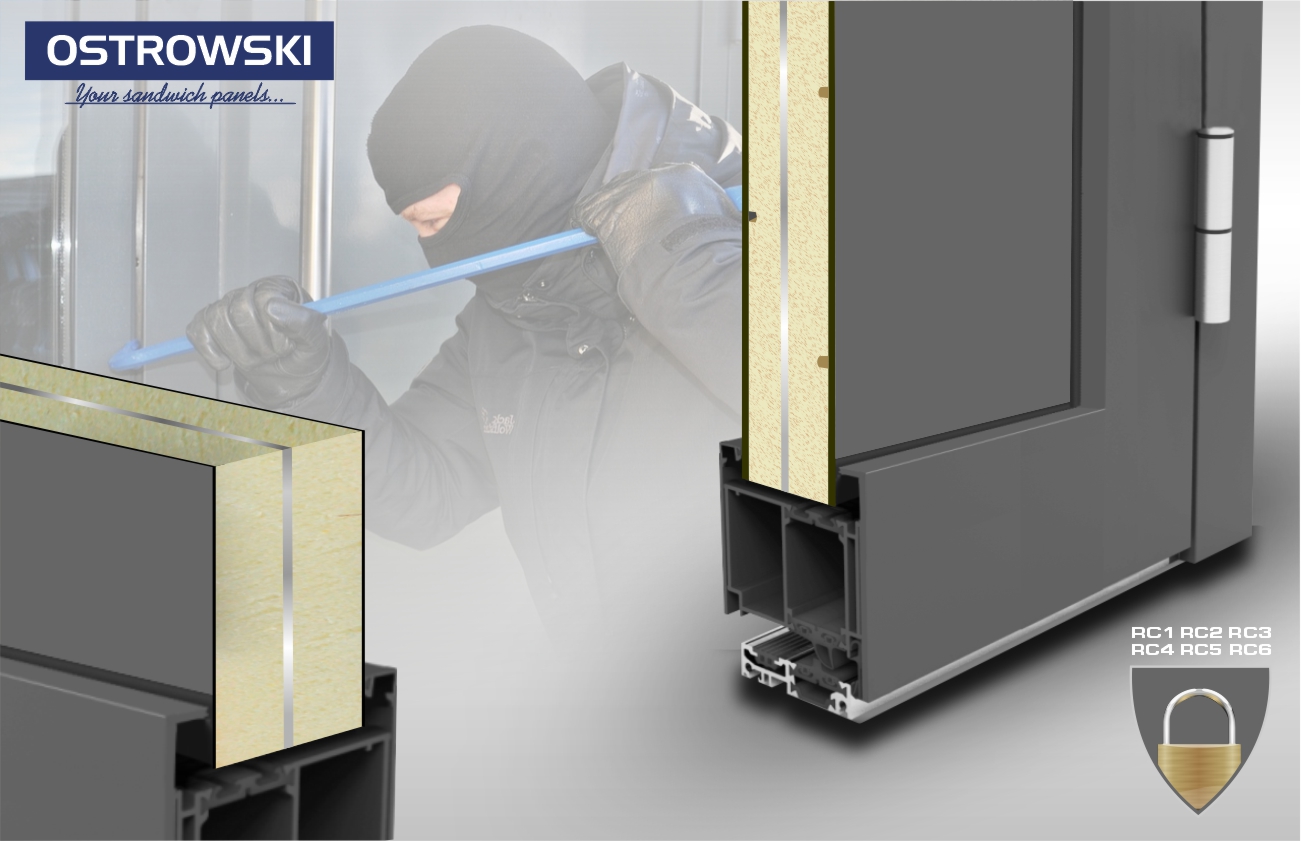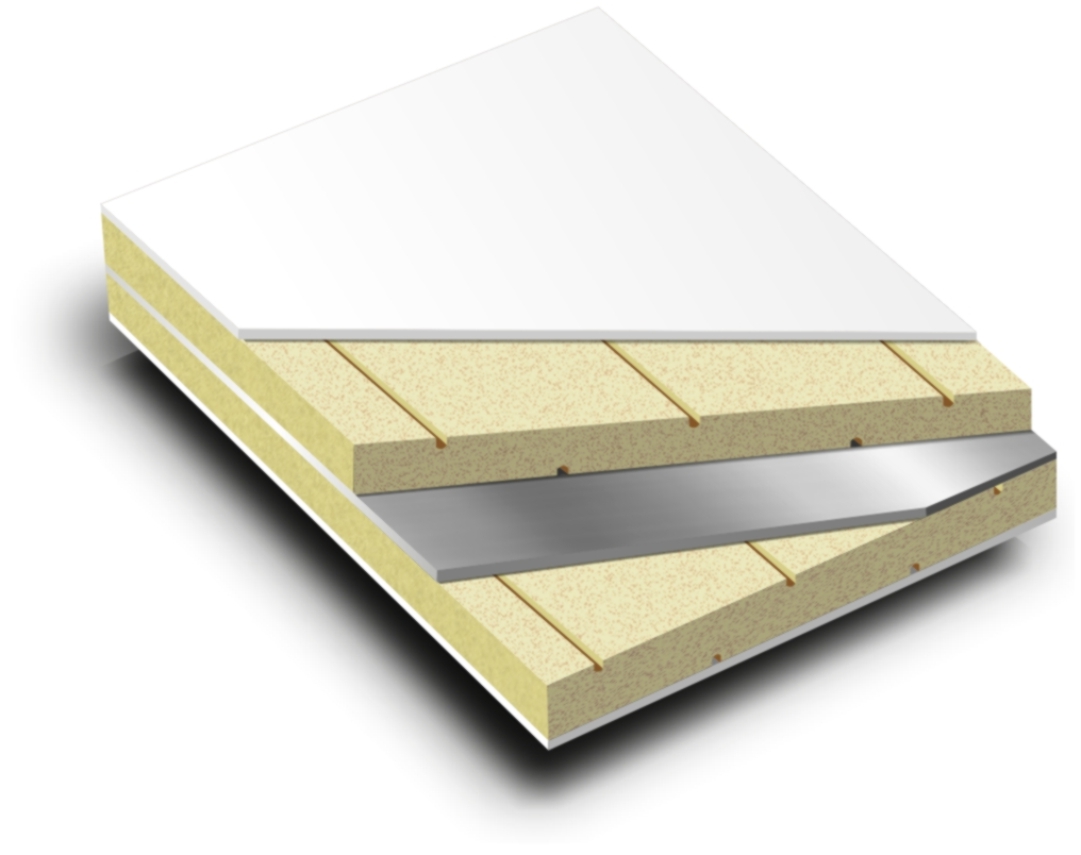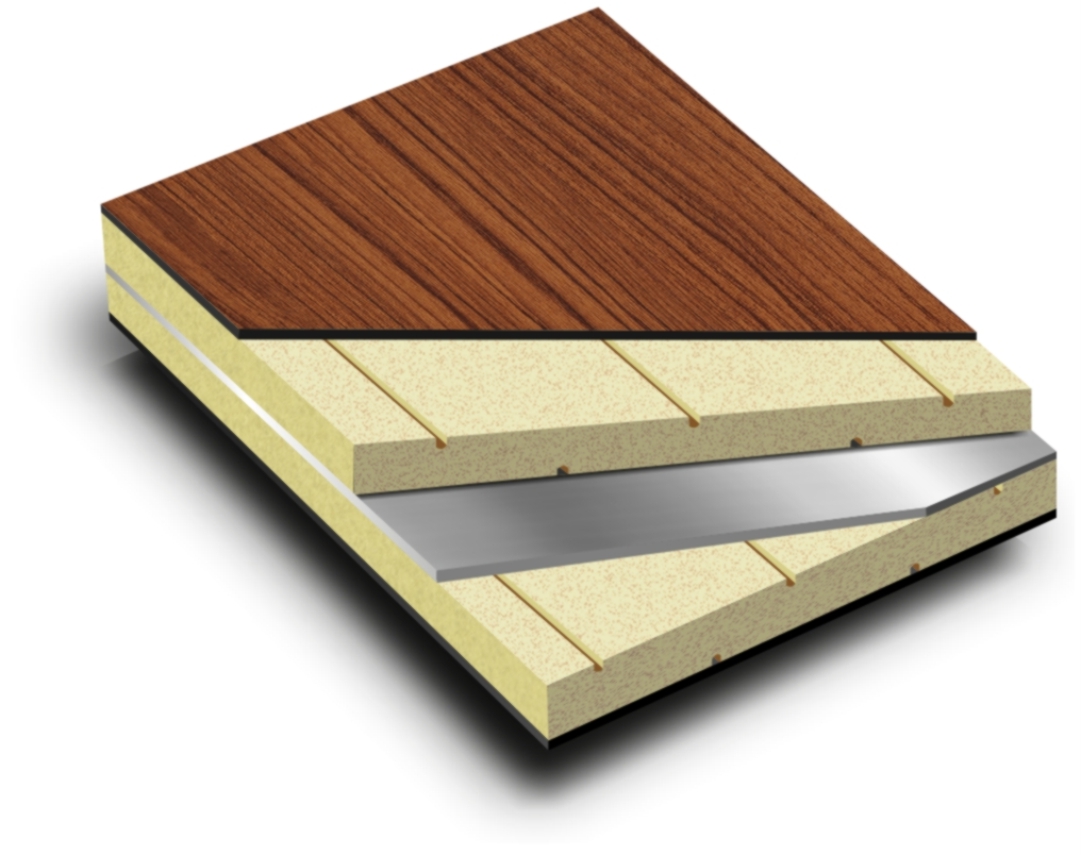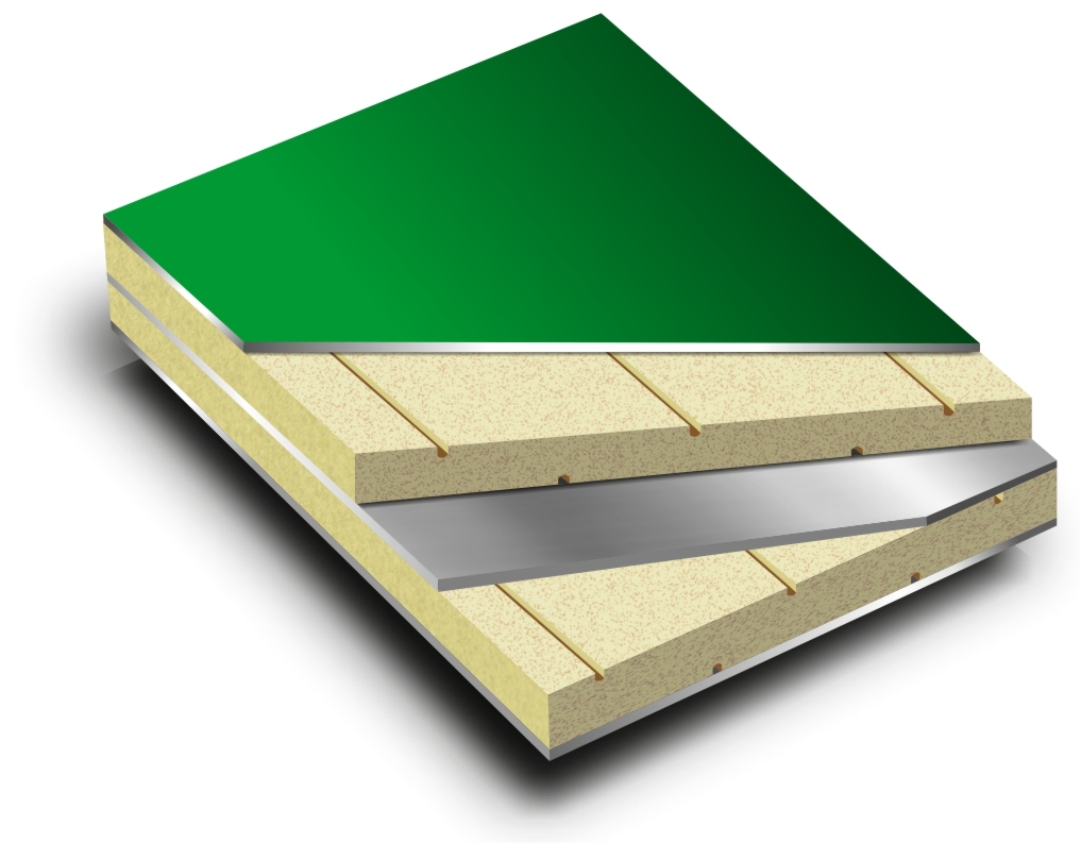Anti-theft door panel
Anti-theft door panel. Our Classic-Therm® door panels can be equipped with a special insert – a standard aluminum plate with a thickness of 1.0 mm, but at the customer’s request it is possible to insert an aluminum plate with a thickness of 1.5 / 2.0 / 3.0 mm. The aluminum insert significantly affects the property which is resistance to damage or puncture, and thus improves the anti-burglary properties of the door in which it is used. The insert used creates a barrier that is difficult to pass for a burglar. It protects property, as well as household members in case of dangerous situations, which are unfortunately more and more nowadays.
Anti-burglary door fillings and the PN-EN 1627: 2012 Norm
When buying anti-burglary doors for your home, it is worth paying attention to several important features. One of them is the anti-burglary class. Currently, the European standard PN-EN 1627: 2012 is in force in Poland “Doors, windows, curtain walls, grilles and shutters – burglary resistance – requirements and classification.” This standard divides external doors into six burglary resistance classes, marking them with the RC – resistance class symbol.
RC class 1 – low level of burglar involvement when trying to break through the door. Doors belonging to this class can be broken in without any special preparation, using only physical force or very simple tools (you can force them by kicking them, hitting them with the shoulder, lifting them on the hinges, tearing them out, etc.), which may take a while.
RC 2 class – the level of involvement of the person committing the burglary is still low. This type of door is most often breached without prior preparation. The burglar usually uses simple tools such as: hammer, screwdriver, pliers, wedge, etc. This class door resists the burglar for 3 minutes.
RC 3 class – a burglar must demonstrate a moderate level of involvement. Therefore, having knowledge about the resistance of the door, he takes into account the time and noise it generates when trying to force it. RC 3 class doors are most often broken with a steel crowbar and with the use of a mechanical drill and other simple additional tools. The resistance is 5 minutes.
RC 4 class – the burglar must be properly prepared to force the door open. It requires tools that will allow the burglar to attack the obstacle in a variety of ways (drill, saw, chisel, chisel, ax, large hammer). Doors of this class are destroyed based on the belief that tangible benefits from burglary are achieved, and with a relatively high level of risk. Break-in time is 10 minutes.
RC 5 class – burglary can only be done by an experienced and well-prepared person. Power tools are needed to force the door open, e.g. a drill, jigsaw, angle grinder, and a chainsaw. This door cannot be breached in less than 15 minutes.
RC 6 class – doors with the highest burglary resistance. It takes at least 20 minutes to break them out. Professional, high-powered power tools are also indispensable. Only an experienced and well-prepared burglar can break through such a door.
Anti-theft door leaf – cores
From the materials for the production of door fillings, and more precisely their core, we usually use XPS extruded polystyrene – a core with a closed-cell structure, which is an excellent insulation material, resistant to moisture and frost. We also use a PUR board, which allows us to maintain thermal, fire and mechanical stability in all environmental conditions for years of operation. It is also worth remembering about the PT board made of 100% recycled materials.
When it comes to external cladding, we have already described them in separate news, which you can find HERE – click
We also offer the production of sandwich panels made to special customer orders. If you have any questions, please contact us directly – CONTACT
We invite you to our FB profile: Ostrowski – Producer of Sandwich Panels




